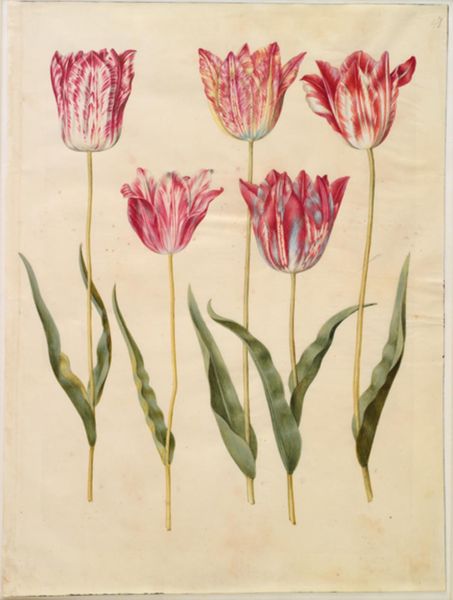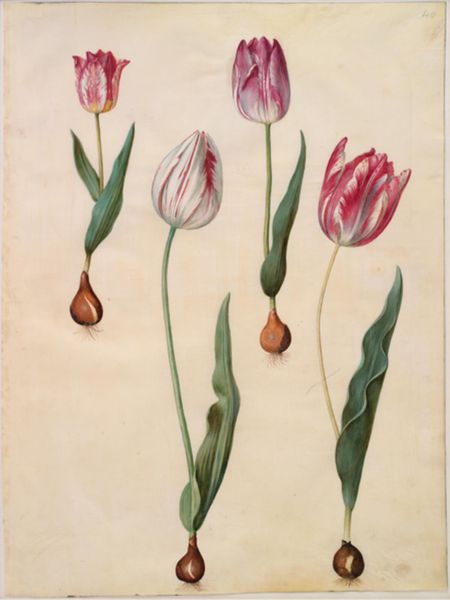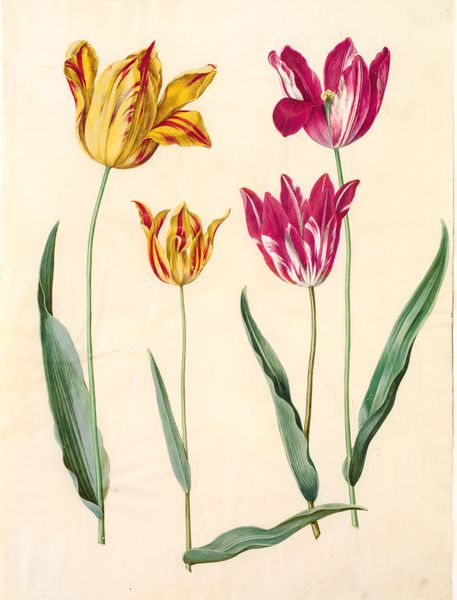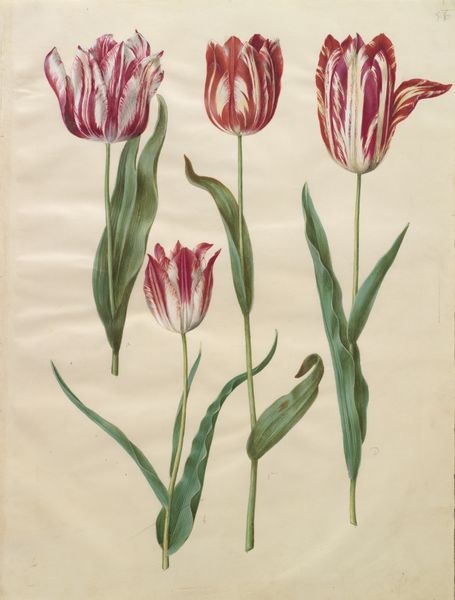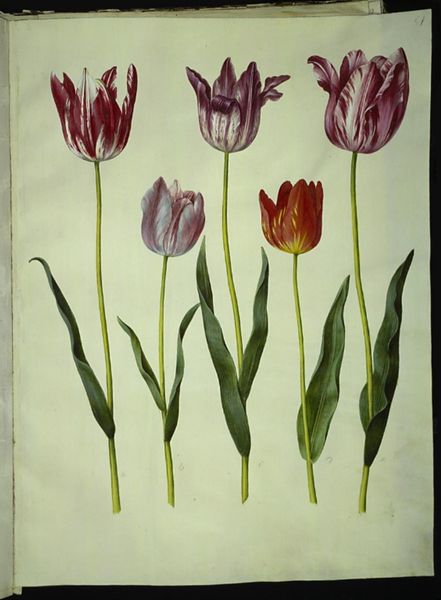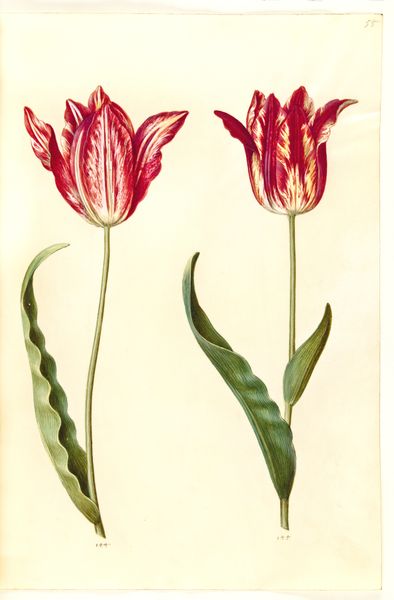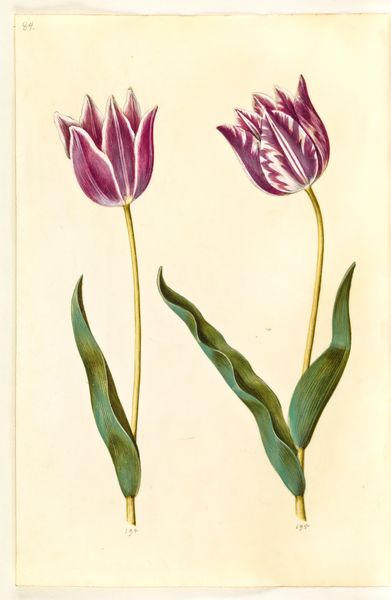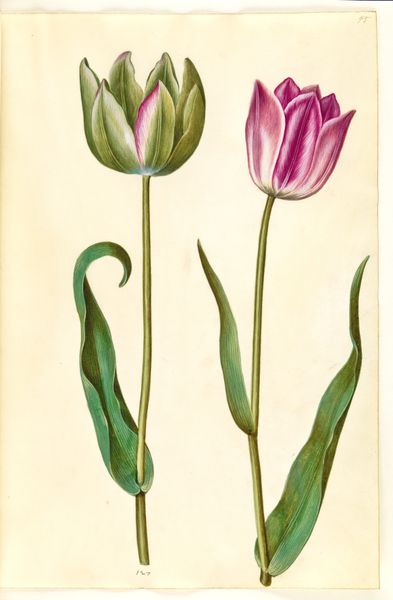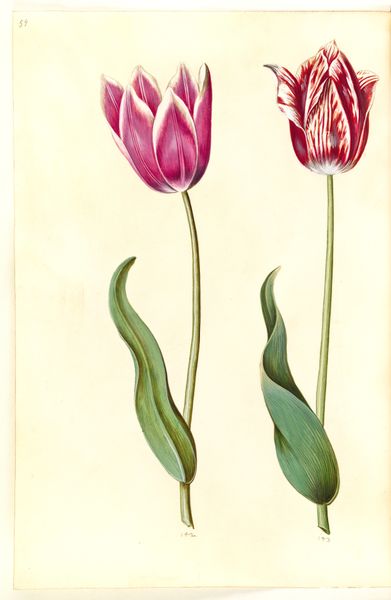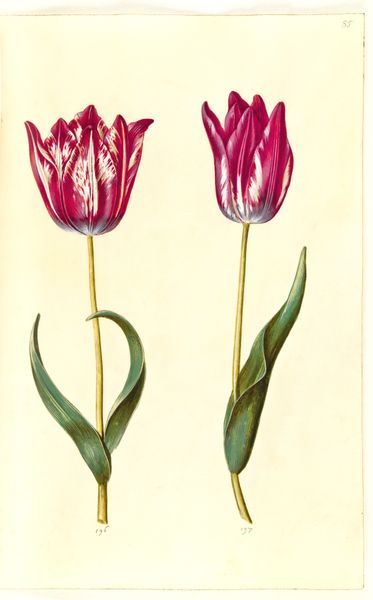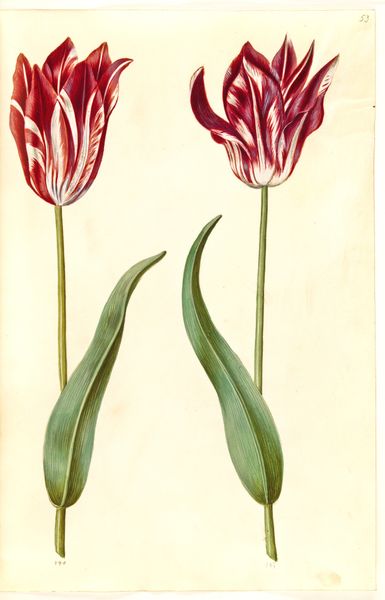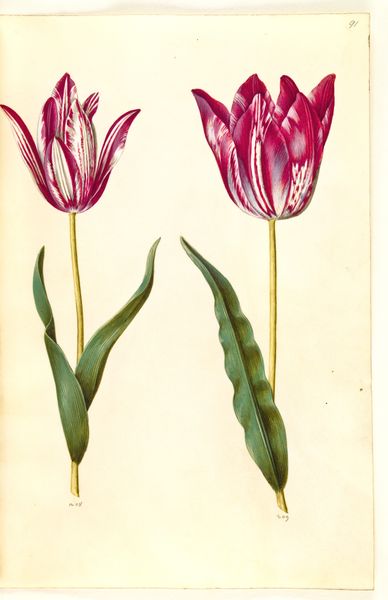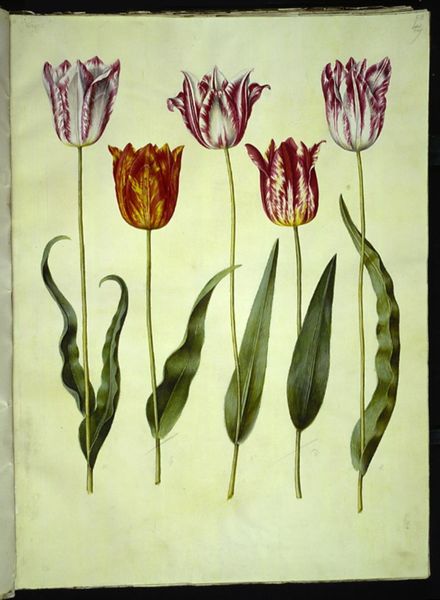
drawing, gouache, watercolor
#
drawing
#
dutch-golden-age
#
gouache
#
watercolor
#
watercolour illustration
#
realism
Dimensions: 505 mm (height) x 385 mm (width) (bladmaal)
Hans Simon Holtzbecker created this botanical study of tulips on paper sometime in the 17th century. The medium itself speaks to the artist’s intent. This isn't a painting on canvas intended to emulate reality. It's an observation, an objective record using accessible materials like paper, inks, and watercolors. The smooth surface of the paper contrasts with the delicate brushwork, allowing Holtzbecker to capture the subtle gradations of color in the petals and leaves. But beyond mere description, the artwork is imbued with the cultural significance of the tulip itself. During the 17th century, tulips were a luxury commodity, and this piece reflects the immense value placed on these imported flowers. The rendering of these exotic blooms, down to the roots of the bulb, suggests a desire to master nature through careful study. Holtzbecker's rendering transforms a simple flower into a potent symbol of wealth, status, and the burgeoning world of global trade.
Comments
No comments
Be the first to comment and join the conversation on the ultimate creative platform.
